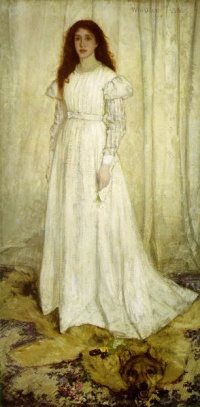White people
From The Art and Popular Culture Encyclopedia
|
"There is no tomorrow that sings for the white race", 1957, Louis-Ferdinand Céline "Yes, it would be worthwhile to study clinically, in detail, the steps taken by Hitler and Hitlerism and to reveal to the very distinguished, very humanistic, very Christian bourgeois of the twentieth century that without his being aware of it, he has a Hitler inside him, that Hitler inhabits him, that Hitler is his demon, that if he rails against him, he is being inconsistent and that, at bottom, what he cannot forgive Hitler for is not the crime in itself, the crime against man, it is not the humiliation of man as such, it is the crime against the white man, the humiliation of the white man, and the fact that he applied to Europe colonialist procedures which until then had been reserved exclusively for the Arabs of Algeria, the 'coolies' of India and the 'niggers' of Africa." --Discourse on Colonialism (1950) by Aimé Césaire "The white race is the cancer of human history; it is the white race and it alone—its ideologies and inventions—which eradicates autonomous civilizations wherever it spreads, which has upset the ecological balance of the planet, which now threatens the very existence of life itself."--"What's Happening in America" (1966) by Susan Sontag "Decolonial feminism must have as its imperative to radically refuse the discourses and practices that stigmatize our brothers and that, in the same move, exonerate white patriarchy."--Whites, Jews, and Us (2016) by Houria Bouteldja, p. 97 |

|
Related e |
|
Featured: |
White people is a racial classification specifier, used for people of Europid ancestry, with the exact implications dependent on context. The contemporary usage of "white people" or a "white race" as a large group of (mainly European) populations contrasting with "black", American Indian, "colored" or non-white originated in the 17th century.
It is today particularly used as a racial classifier in multiracial societies. Various social constructions of whiteness have been significant to national identity, public policy, religion, population statistics, racial segregation, affirmative action, white privilege, eugenics, racial marginalization and racial quotas.
The term "white race" or "white people" entered the major European languages in the later 17th century, in the context of racialized slavery and unequal status in European colonies. Description of populations as "white" in reference to their skin color predates this notion and is found in Greco-Roman ethnography and other ancient sources. Scholarship on race generally distinguishes the modern concept from pre-modern descriptions of collective difference.
See also
- Angry white male
- Blue-eyed soul
- Stereotypes of whites
- The White Goddess
- Caucasian race
- Tears of the White Man
- White genocide conspiracy theory
- White guilt
- White American
- White man
- White privilege
- White slavery
- White men
- White Man's Burden
- White women
- Keuze voor de term blank of wit

